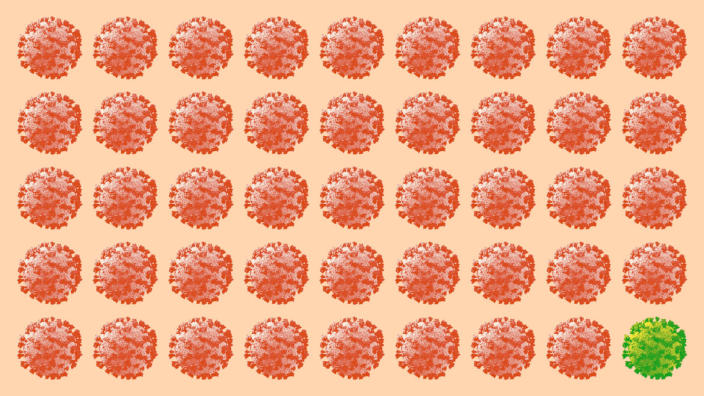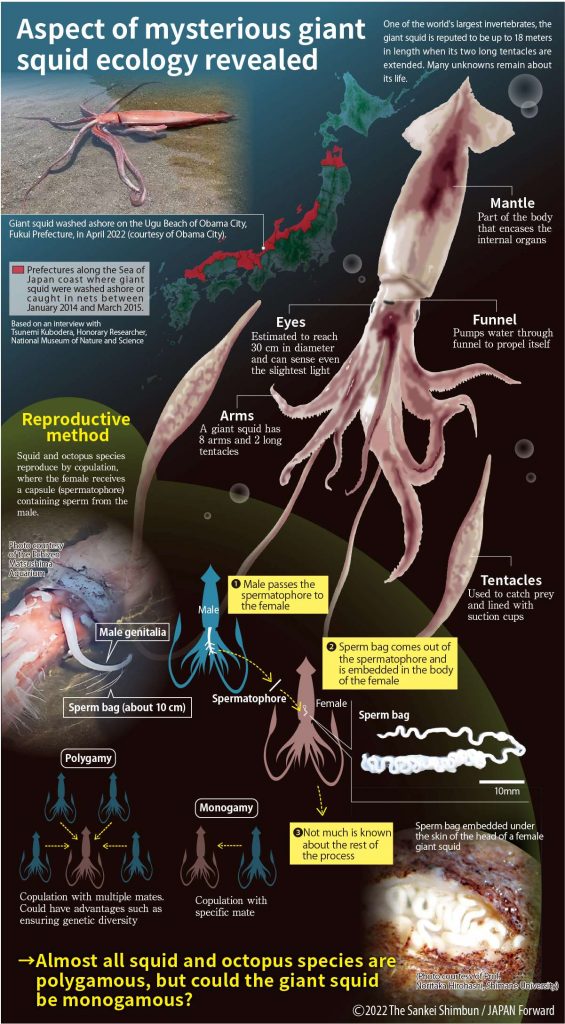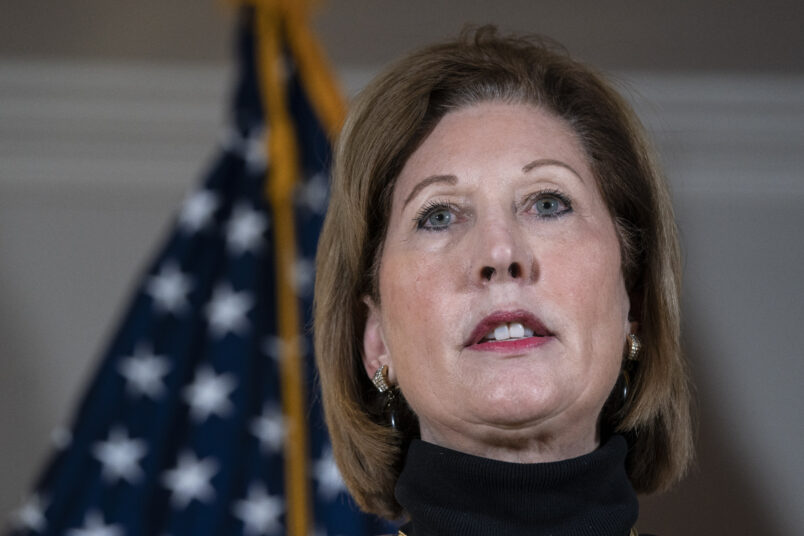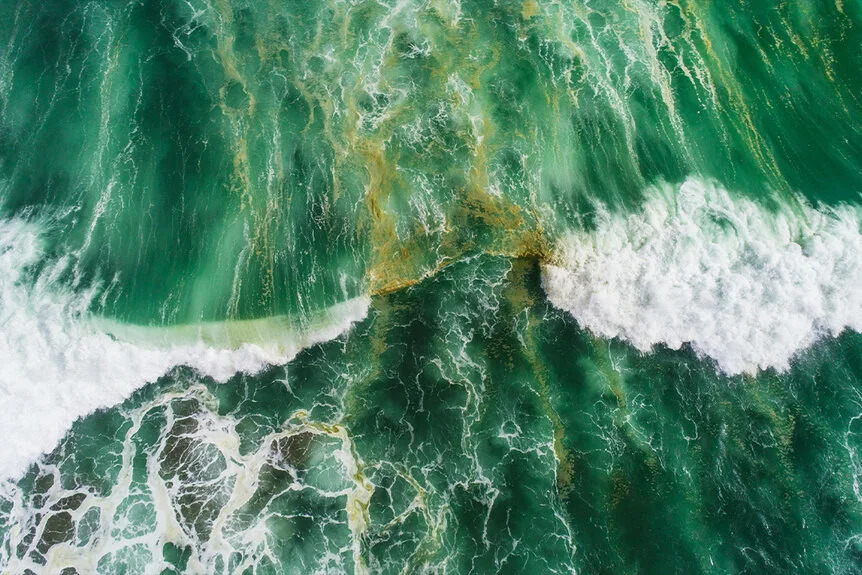David Axe
Sun, April 2, 2023

Photo Illustration by Elizabeth Brockway/The Daily Beast
The SARS-CoV-2 virus is highly contagious but the current dominant strains are not very lethal. Its much rarer cousin in the betacoronavirus family of pathogens, MERS-CoV, is highly lethal but not very contagious. Now imagine a blend of the two—a respiratory virus with the most dangerous qualities of both. Contagious and lethal.
It’s a real risk, according to a new study from China. And it’s a strong argument for a new, more widely effective vaccine.
Different viruses from the closely related families can combine through a process called “recombination” and produce hybrids called “recombinants.” This recombination requires the viruses to share an infection mechanism. For the first time, a team of scientists in China has identified the mechanism by which SARS and MERS could combine—by entering human cells via colocated receptors. Basically, the cells’ entry points for external molecules.
If a single person ever catches SARS and MERS at the same time through neighboring receptors and the two viruses combine, we could have a whole new pandemic on our hands—one that could be far worse than the current COVID-19 pandemic.
The recombination risk is one driver of a global effort to develop new vaccines that could prevent, or reduce the severity of, infection by a variety of SARS viruses, MERS, and any hybrid of them. A universal vaccine for a whole family of viruses.
Good news: Universal vaccines are in development. Bad news: They’re still a long way from large-scale human trials—and an even longer way from regulatory approval and widespread availability. Years, perhaps.
A team led by Qiao Wang, a virologist at the Shanghai Institute of Infectious Disease and Biosecurity, part of Fudan University in Shanghai, highlighted the SARS-MERS recombination risk in a peer-reviewed study that first appeared in the journal Signal Transduction and Targeted Therapy on March 15.
SARS-CoV-2 tends to favor a receptor called ACE2, while MERS-CoV tends to favor the DPP4 receptor, Wang and their coauthors explained. Our cells tend to have one or the other, not both. In the very unlikely chance someone catches both SARS and MERS at the same time, the viruses should stay safely in their separate cells.
But Wang and company identified a few cell types, in the lungs and intestines, that have both ACE2 and DPP4 receptors, thus “providing an opportunity for coinfection by both SARS-CoV-2 and MERS-CoV.” Wang and a teammate did not respond to a request for comment.
This hypothetical coinfection—SARS-CoV-2 and MERS-CoV mixing and mutating in the same cells—“may result in the emergence of recombined [betacoronavirus],” Wang and their coauthors wrote. Call it “SARS-CoV-3” or “MERS-CoV-2.”
Either way, this new virus “may bear high SARS-CoV-2-like transmissibility along with a high MERS-CoV-like case-fatality rate, which would have catastrophic repercussions,” Wang and their teammates wrote.
Did AI Just Help Us Discover a Universal COVID Vaccine?
How bad could it be? The most contagious forms of SARS-CoV-2, the XBB subvariants—a.k.a., “Kraken”—is by far the most transmissible respiratory virus anyone has ever observed. It’s not for no reason that XBB subvariants quickly outcompeted rival subvariants in order to become globally dominant in just a few weeks early this year.
But Kraken is less severe—that is, less likely to kill—than earlier forms of SARS-CoV-2. Vaccines and natural immunity help a lot, but there are also signs that the novel-coronavirus is slowly evolving toward higher transmissibility but lower severity. At its worst in 2021, COVID killed nearly 5 percent of infected persons in the worst-hit countries such as Peru and Mexico. Today, the global fatality rate is around 0.9 percent.
MERS, by contrast, spreads much more slowly. It mostly affects camels. When it infects people, it’s usually when those people are in close contact with the animals. Human-to-human transmission is extremely rare. “Only a few such transmissions have been found among family members living in the same household,” the World Health Organization noted.
In 27 small outbreaks since 2012, fewer than 900 people have died of MERS. Compare that to the 6.9 million people who have died of SARS-CoV-2 since late 2019. The problem, with MERS, is that those 900 or so deaths represent a third of infections. That is to say, MERS is at least six times more lethal, on a case-by-case basis, than SARS was at its worst.
So if a SARS-MERS recombinant inherited the former’s transmissibility and the latter’s lethality, it could quickly kill millions. That’s why Wang and their coauthors are, in their own words, “calling for the development of pan-CoV vaccine.”
Don’t panic. Epidemiologists who weren’t involved in Wang and company’s study didn’t necessarily agree with the Chinese authors’ sense of possible imminent doom. “The lifecycle of a virus is delicate and recombination between different viruses is typically uncommon,” Lihong Liu, a Columbia University COVID researcher, told The Daily Beast. “We have not seen any recombination between SARS-CoV-2 and MERS during the COVID-19 pandemic, despite the millions of SARS-CoV-2 infections worldwide. Therefore, it is expected that such an event is unlikely to occur in the future.”
Michael Letko, a Washington State University virologist, told The Daily Beast that Wang’s team is actually half-right. Yes, there’s huge risk from a possible recombinant. But not necessarily a SARS-MERS recombinant. It’s more likely the novel-coronavirus will recombine with a Russian bat virus called Khosta-2, Letko said.
Khosta-2 is even more closely related to SARS-CoV-2 than MERS is, Letko pointed out. Not only is Khosta-2 fond of the same ACE2 receptor that the novel coronavirus prefers, the two viruses also replicate roughly the same way. “The machinery the viruses use to copy their genetic material can get confused, leading to mixing and matching of the genomes,” Letko said of SARS-CoV-2 and Khosta-2. That raises the recombination risk.
Prevention plan
There are around two dozen pan-coronavirus vaccine projects underway all over the world. Haynes and his colleagues at Duke have been working on one since 2020—and it could be among the first to produce a deployable vaccine. Animal testing and small-scale human trials are already underway. But if history is any guide, it could be years before the Duke vaccine or any other pan-CoV jab is ready for widespread deployment.
The wait is worth it, Haynes said. “The current goal of pan-coronavirus vaccines that are currently being tested in monkeys and humans is to make vaccines that both prevent infection by any new COVID variant that might arise, to make vaccines that will prevent any new CoV-2-like CoV outbreak that may arise from bats or other animals as well to protect against any MERS-like virus that may arise.”
That should cover all the bases, at least when it comes to betacoronaviruses including SARS-CoV-2, MERS-CoV and Khosta-2. If our luck holds and we dodge a dangerous SARS recombinant for a few more years, we just might have a universal vaccine—Duke’s or another—that could prevent mass death in the event that hybrid finally appears.
Of course, that “universal” vaccine wouldn’t be truly universal. It wouldn’t save us from RSV, monkeypox, polio or—perhaps most worryingly—bird flu. For those viruses, we need totally different jabs.










